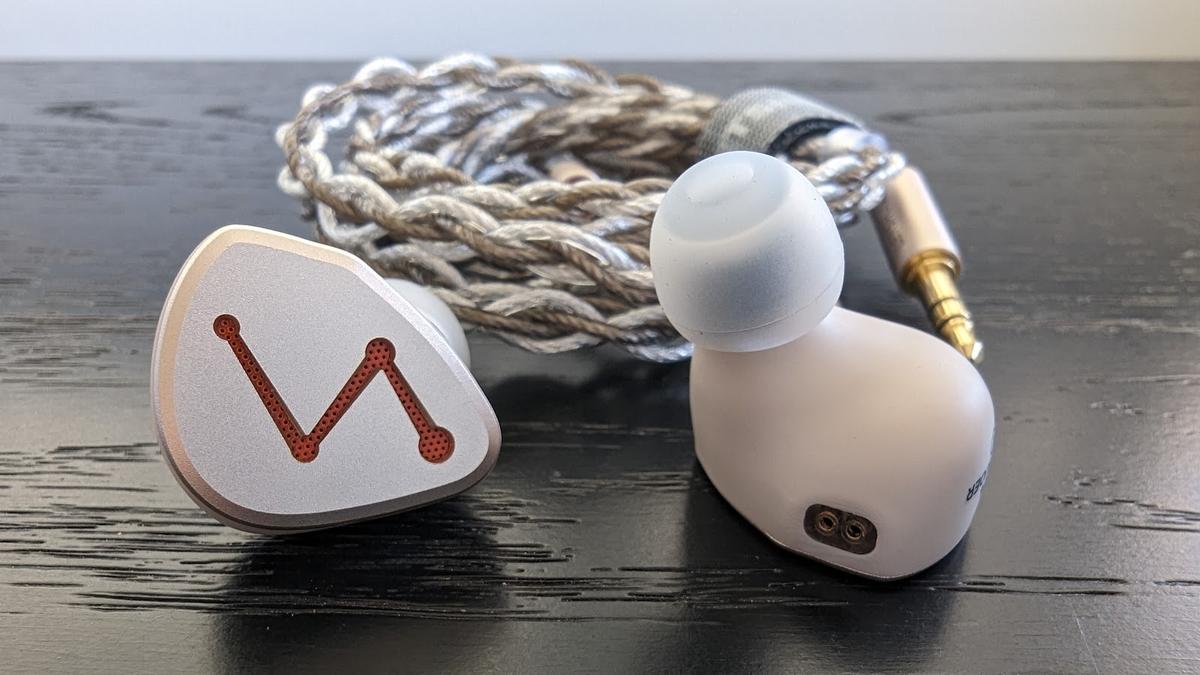The DZ4 have an exciting chrome faceplate design with a beige-colored shell and sound.
- Unique and innovative vented faceplate design
- Excellent fit and finish
- Nice accessories – tips, cable, and case
- Neutral tuning with broad appeal and low fatigue
- Tolerates and benefits from EQ adjustments
- The mismatched beige body color is strange
- Shorter nozzles than average
- Overall sound profile is safe, not exceptional or unique
- Bass authority and impact are unimpressive and highly ear-tip-dependent
- Technical performance is well below the top competition in the price range
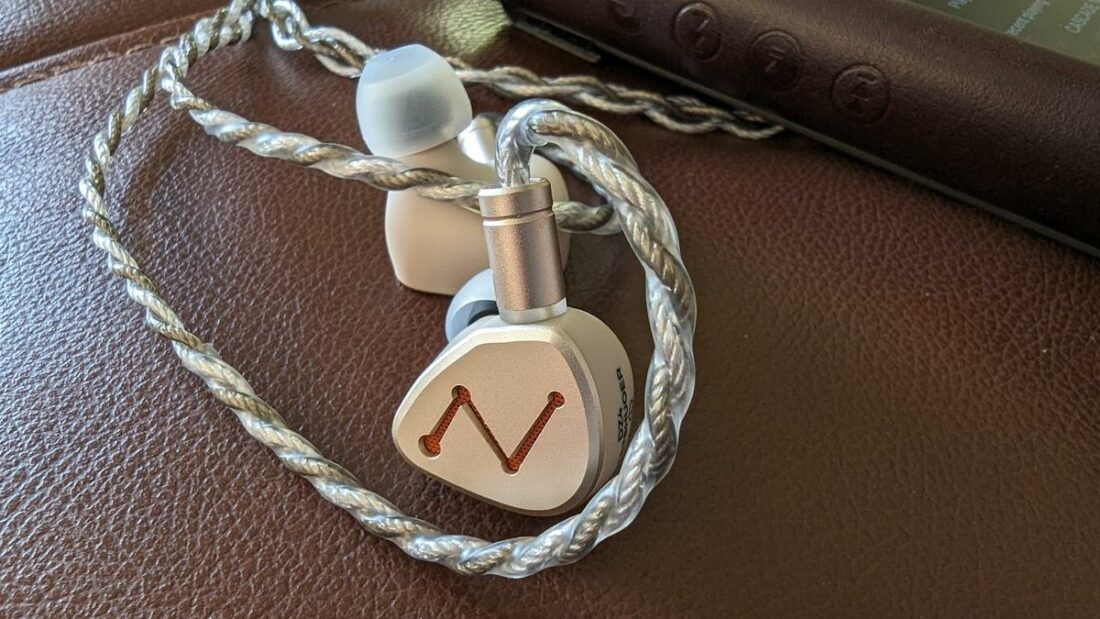
The design choices of the LETSHUOER DZ4 are bold and intriguing, including the internals. If you have the proper fit, the resulting sound is… competent.
Adequate. Average. Fine.
Beige.
Really, I’m not bashing beige. Beige is safe, bland, and boring. For my taste, it’s just not a riveting or vibrant color. Neither is it an exciting description of a sound profile.
Overall, I’m a bit confounded by the DZ4. The sound is not what I expected, and the fit is frustrating. Candidly, I expected more and am disappointed. Bear in mind this is only my experience, and you may love them. Let me share with you why, plus the highs and lows.
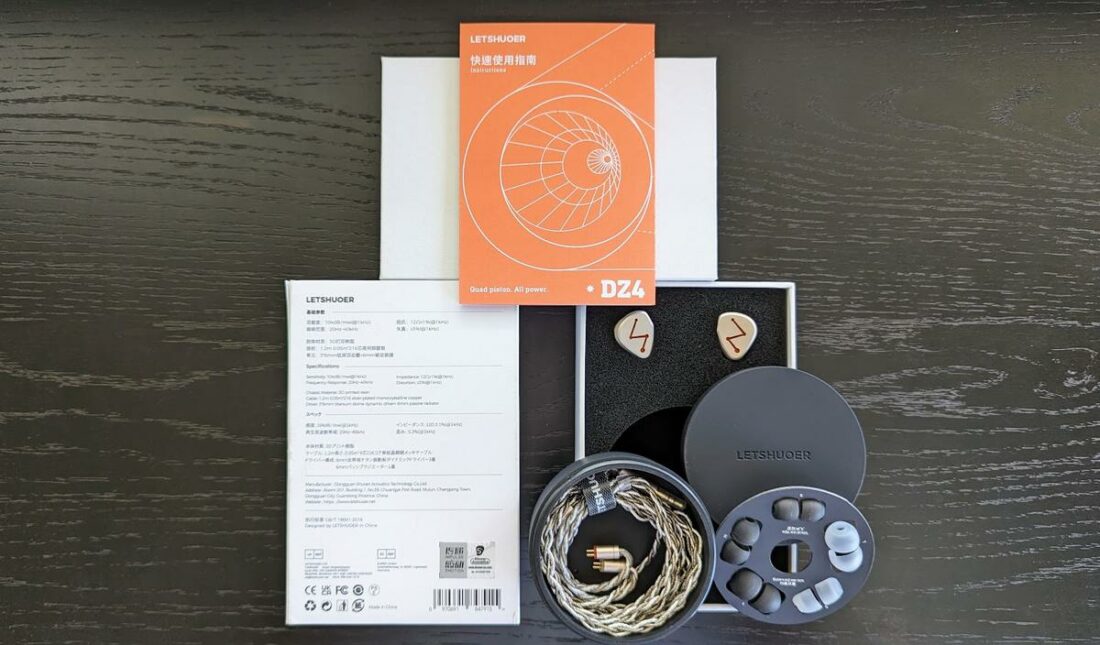
Unboxing and First Impression
Design and Build
LETSHUOER mated metal and resin for the DZ4. The unique faceplate is CNC-milled anodized aluminum with an applied sandblasting treatment, resulting in a subtle matte texture that does not easily pick up fingerprints.
The DZ4 look quite refined up close.
The faceplate sports a fashioned letter Z with a perforated red screen behind the aluminum. The result is an IEM with a semi-open back cavity design, instead of vent holes in the body, meant to release pressure without sound leakage or compromising isolation.
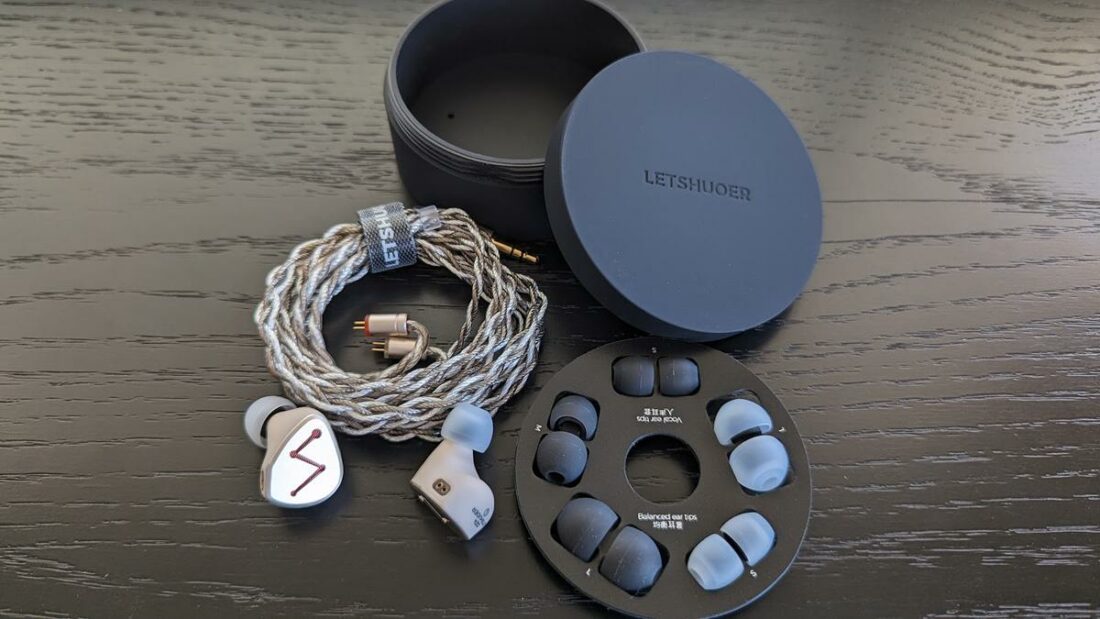
The resin body is a 3D-printed chassis produced in a joint effort with HeyGears, a leading supplier. What’s most strange is the color choice. I believe that black or red would have been a far better design choice for the resin to match the faceplate.
The short nozzles are a significant issue for me, compromising the ear tip seal and resulting sound.
The 2-pin connectors are flush with the body.
Cable
The silver-plated braided monocrystalline copper cable is a beauty that matches the faceplates, not the shell. Despite looking substantial, it is light and flexible, as are the pre-shaped ear hooks. Terminations feel well-reinforced and durable. The cable doesn’t tangle, and the chin slider stays wherever I put it.
There are zero microphonics, which is music to my ears and yours.
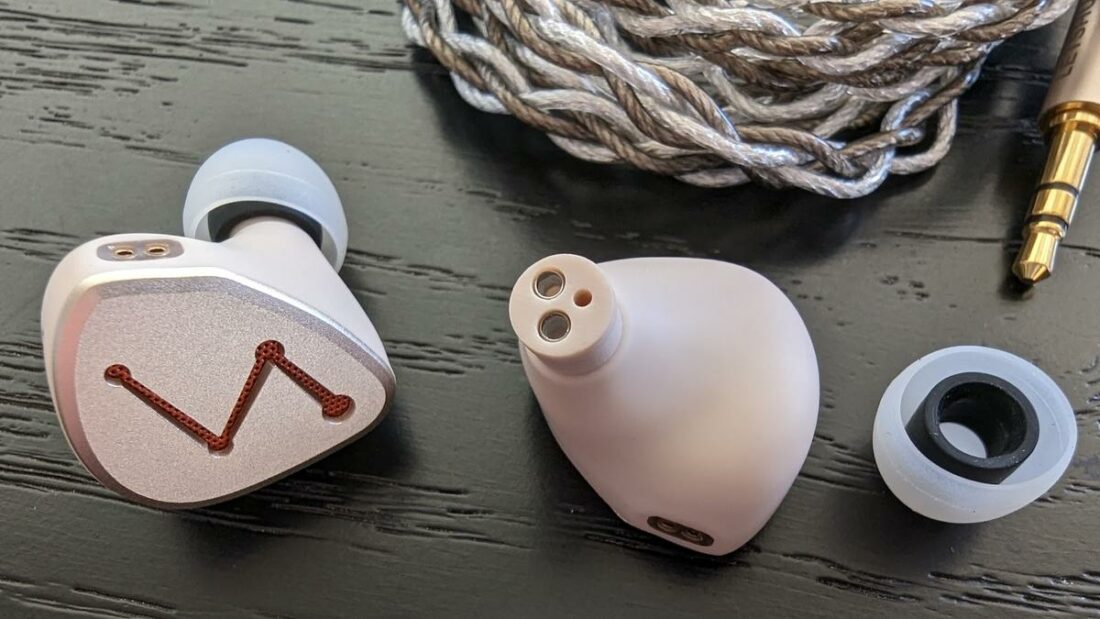
Comfort
The DZ4 are lightweight and ergonomic. The form itself causes me no discomfort.
None of the included tips worked for me.
To compensate for the short nozzle length, I searched my collection for the tallest ear tips I could find, attempting to get a proper seal. I found the yellow pictured tips fit the best – although I’m unsure of the brand or model.
The cable ear hooks hold true to their shape and are flexible.
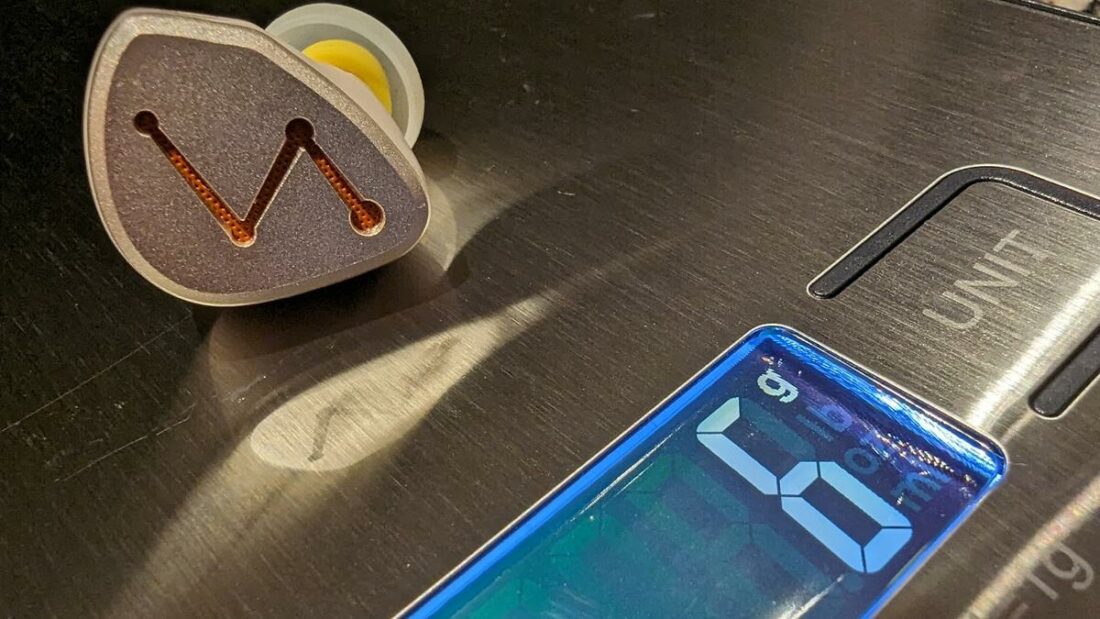
The most significant issue, especially for me, is that the reasonably slim shell and the shorter-than-average nozzle length result in shallow insertion, poor angling, and difficulty achieving a proper seal.
Under the Hood
The DZ4 have three 6mm titanium diaphragm dynamic drivers and a single 6mm passive radiator connected to the dual-pin receptacle via a flexible printed circuit (FPC) crossover board, reducing the weight of the earphones.
Each of the three dynamic drivers has a specific role in the frequency range. The addition of the 6mm passive radiator is intended to achieve a fast and precise passive response to extend the low-frequency reproduction.
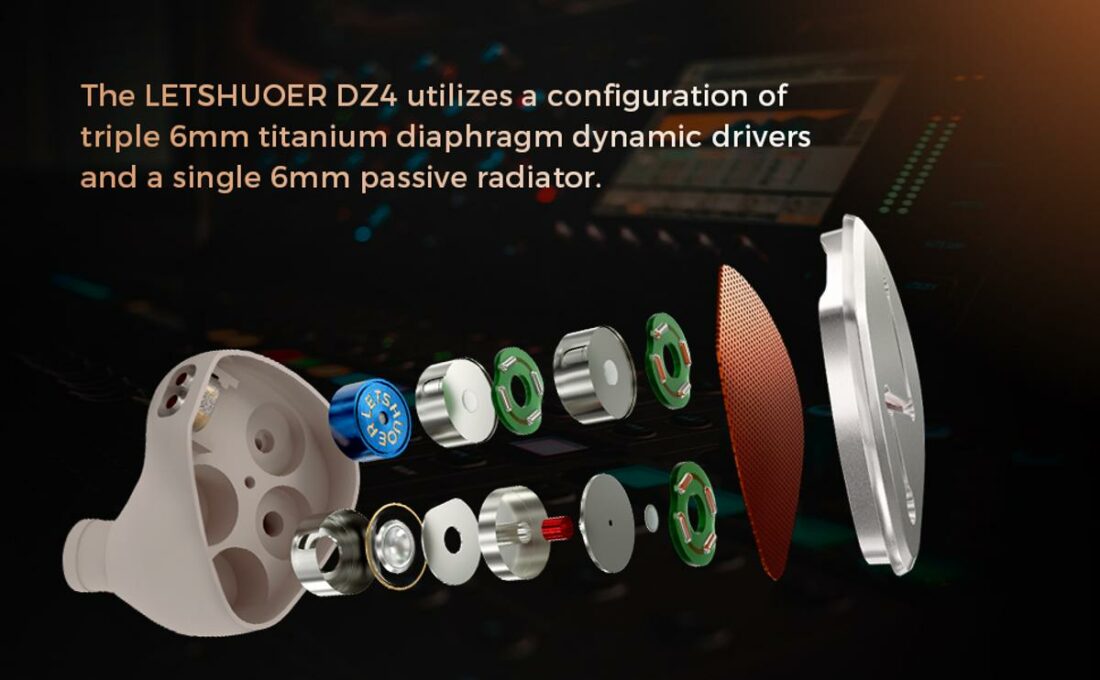
How Do the LETSHUOER DZ4 Sound?
For evaluation, I listen to a great variety of music through numerous sources, including DAPs (FiiO M15S), phones (LG V20, LG V60), portable DAC/amps (HELM Audio Bolt, DB12 AAAMP, TempoTec Sonata E44, Khadas Tea, Qudelix-5K) and desktop DAC/amps (S.M.S.L SP200, HIFIMAN EF400).
With a very low impedance of 12 ohms and a high sensitivity of 104dB, the DZ4 are easy to drive from any source.
As noted previously, the body and nozzle are too short and quite wide, resulting in a shallow insertion. I struggle to keep the IEMs well-seated and sealed.
These issues made evaluating the sound challenging.
The soundstage is spacious thanks to the semi-open design, while the left/right separation is clear. Timbre is generally acceptable, with occasional odd presentations in the upper midrange and lower treble and some instruments sounding dull.
Back to beige.
The DZ4’s sound signature is relatively balanced, ever so slightly warm, and somewhat bland, i.e., non-descript. The sound presentation is somewhat muted and lacks pop. They’re fine if you’re looking for a relatively warm, inoffensive sound that will not cause fatigue.
The upside is that the DZ4 are amenable to EQ adjustments, likely thanks to the three dynamic drivers with separate frequency duties. EQ can make the sound more appealing and engaging for me, starting with a 3dB bass shelf at and below 125Hz.
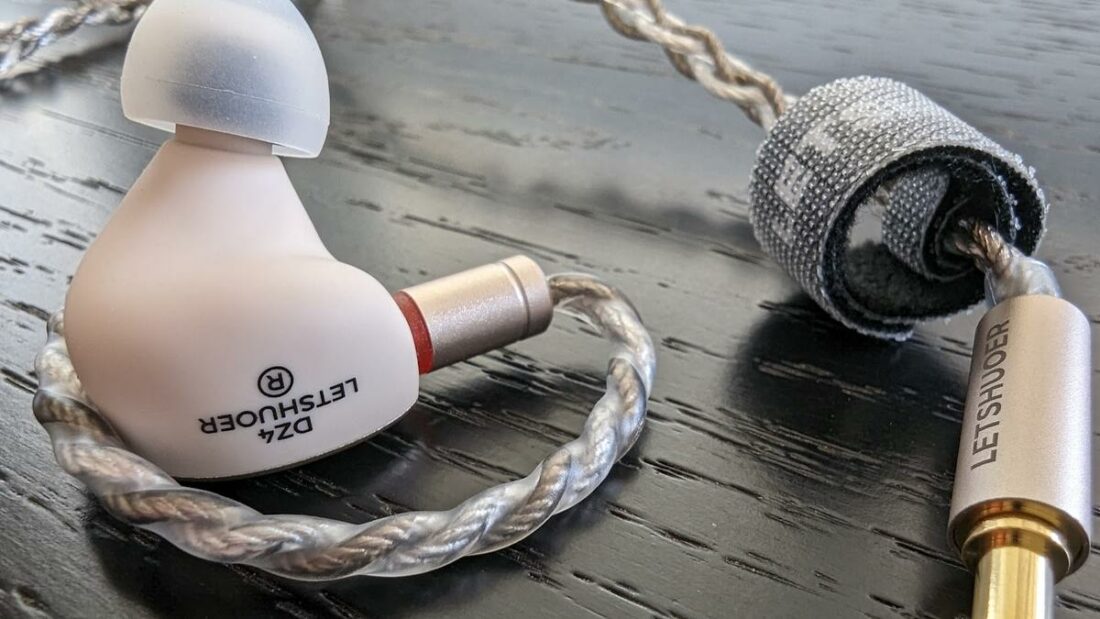
For this review, I visited the following artists and their home locations:
- Sweden: Warriors by Seventh Wonder
- England: Waves by Guthrie Govan
- United States: Trapped in Ice by Scale the Summit
- Italy: Drop D by Matteo Mancuso
A fascinating collection from several continents, these diverse musical productions range in ethnic origins, musical styles, and explorations in audio.
Bass
I expected the DZ4’s bass impact to stand out with their power combination driver configuration. Alas, no. To quote Marvin the Martian: “Where’s the kaboom? There was supposed to be an Earth-shattering kaboom!”
Despite what the frequency response graph suggests, the bass is average, at best, in both quantity and quality.
Bass delivery, like all else here, is a bit ho-hum. Fine. I heard no distortion when listening at moderate to loud volumes (for testing). Attack and decay speeds are average for dynamic drivers. Resolution is adequate for natural instruments and music that is not overly busy or technical.
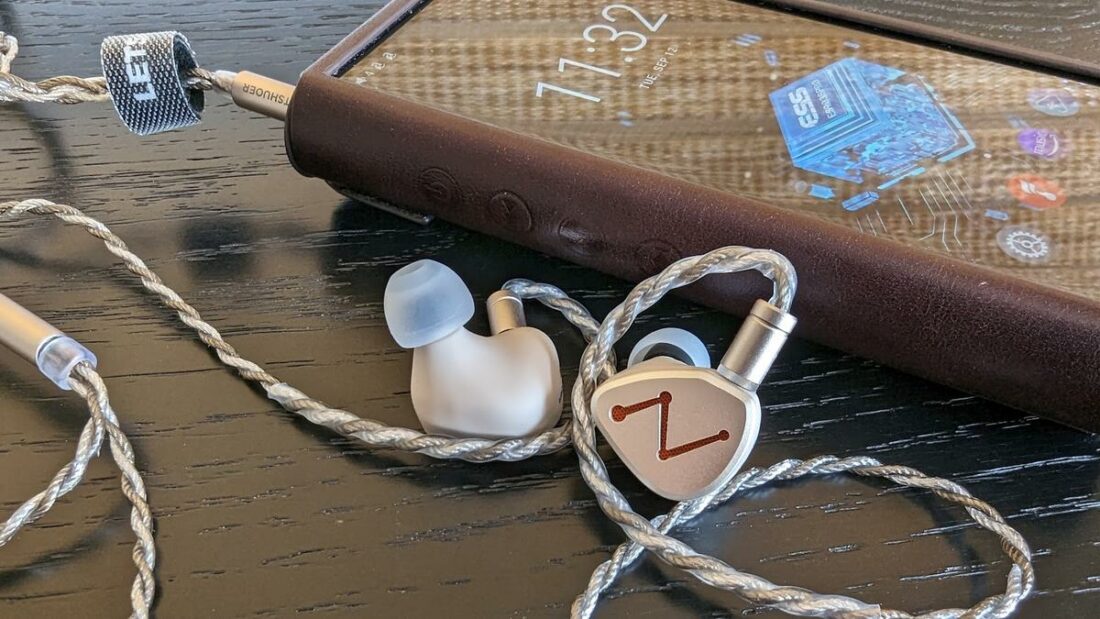
Midrange
The midrange is present, though it could be more detailed. On a positive note, the DZ4 are smooth and do not come across as shouty due to the lack of noticeable spikes in the midrange frequencies.
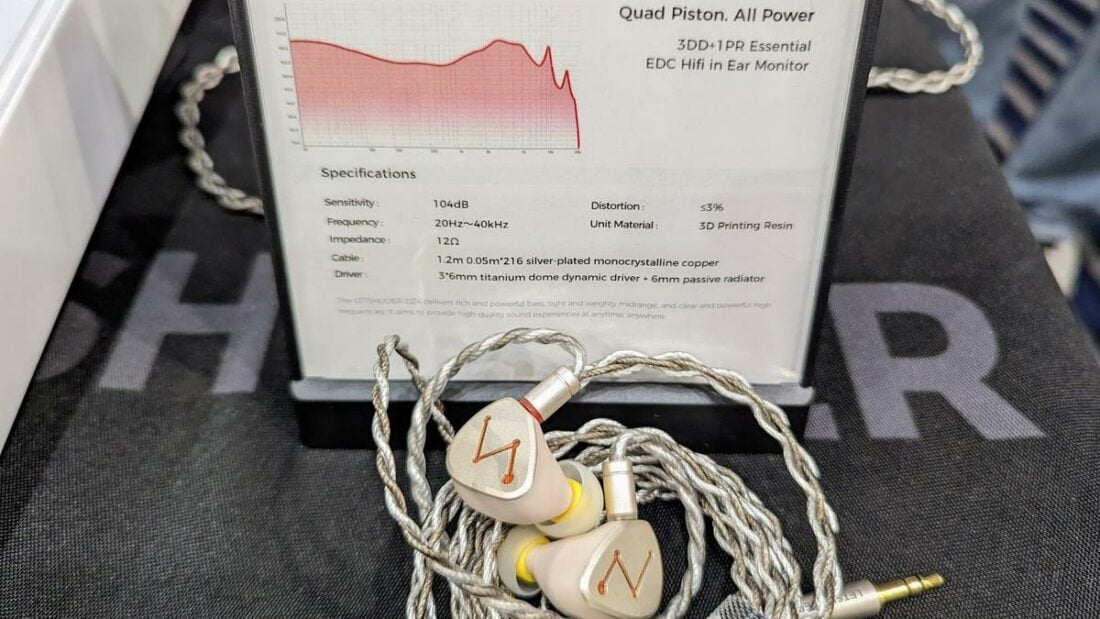
Treble
The treble is a bit shy, never shining with detail and clarity. This range is somewhat constrained with some notable veiling. The treble lacks air and liveliness. The upside is that if you are treble-sensitive, the DZ4 will not cause you pain. There is a touch of sibilance on rare occasions in the lower treble, though nothing I’m distracted by.
Where to Buy
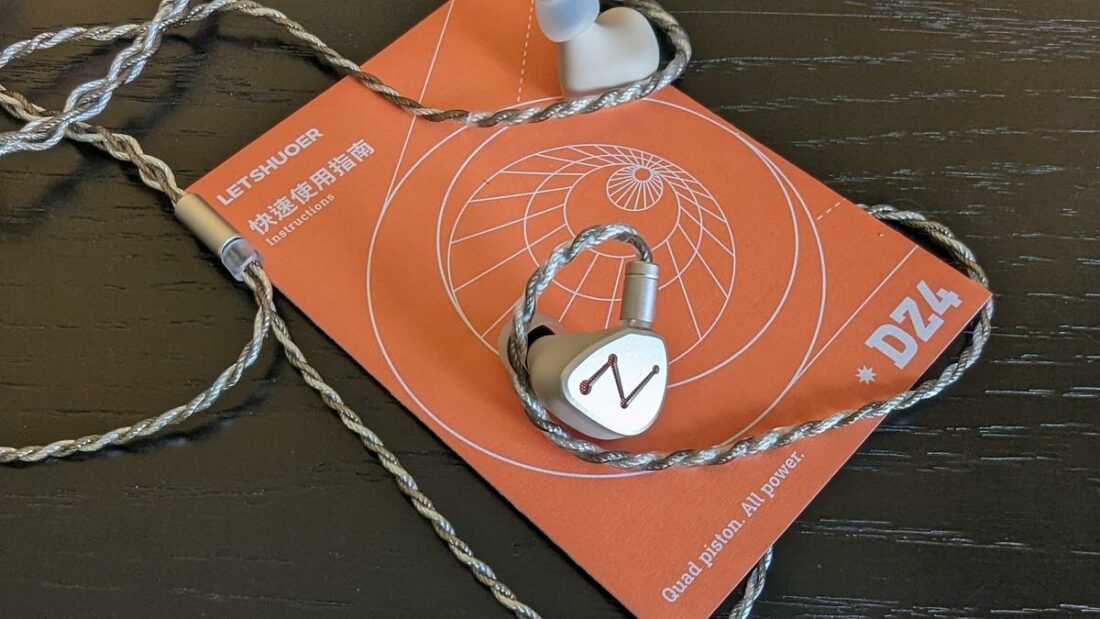
Who Should Buy This?
If you’re looking for all-purpose, competent IEMs with no glaring faults and neutral-warm tuning, the DZ4 will be an excellent choice. The DZ4 are not for you if you want a distinct, colored, unique sound signature. If you love thump and high detail, you’ll also be best off considering different products.
I encourage you to explore other reviewer and owner perspectives, as I may be an exception. Despite my opinion, the DZ4 may suit you well. Given the DZ4’s innovation, design, and overall performance, they are competitive in the price range and may be enough to win you over.
Final Thoughts
I am smitten with LETSHUOER’s unique EJ07M, love the fun and detailed S12, and am continually surprised by the Singer… less so with the D13. Having auditioned the soon-to-be-released S15 planar magnetic IEMs, I’m confident they will be a formidable addition to the lineup.
It’s possible my expectations were too high for the DZ4, especially with the 3+1 driver configuration. I was hoping for standout bass performance in this price category and some clear distinction from the competition.
The stock tuning is neutral-warm and unremarkable. This is not necessarily a negative, just my observation. The DZ4 have not gained my attention or favor, and candidly, they will not be IEMs I will spend more time listening to.
Upgraded drivers, tuning modifications, and a different colored body are needed to make the DZ4 highly competitive IEMs.
Regardless, I’m still a LETSHUOER fan. To their credit, the DZ4 are another well-executed design risk with further diversification in their tuning, not sharing much in common with other IEMs in the current lineup. “Different strokes for different folks” may be the strategy.
Company Overview
I have experience with various LETSHUOER IEMs across their price and complexity range, including the outstanding EJ07M. In addition, I have the entry-level tiny bullet-style Singer and the critically acclaimed planar magnetic S12.
LETSHUOER, previously known as Shuoer Acoustics, was founded in Dongguan, Guangdong, in August 2016 by self-proclaimed IEM “geekers” and audiophiles with an average of 16 years of experience.
What’s in the Box?
- LETSHUOER DZ4 IEMs
- Six pairs of silicone ear tips (S, M, L)
- 1.2m (4 ft) silver-plated monocrystalline copper cable
- Carrying/protection case
- Instruction manual, inspection card, and warranty card
Technical Specifications
- Style: In-ear monitor
- Drivers: Triple 6mm titanium dome dynamic drivers + one 6mm passive radiator
- Impedance: 12 ohms
- Sensitivity: 104 dB/mW
- Frequency Response Range: 20Hz – 40kHz
- Plug Type: 3.5mm gold-plated connector
- Pin Type: 0.78mm 2-pin
- Cable Length and Type: 1.2m (4 ft) with four cores of 216 strands of silver-plated monocrystalline copper (0.05mm diameter) with pre-shaped ear hooks
- Weight: 6g per IEM (including ear tip)
